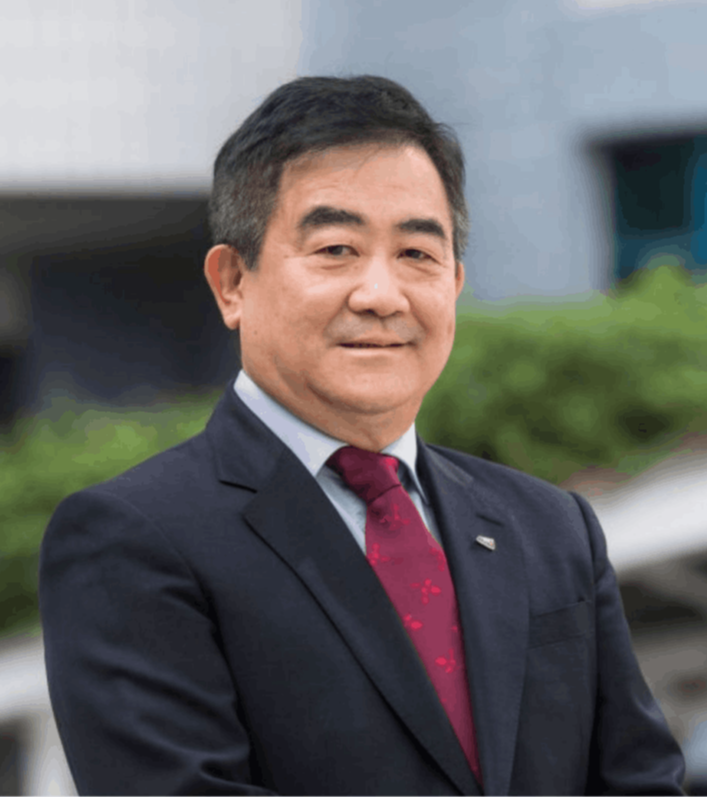Plenary Speaker
Biography
Professor Alex K-.Y. Jen is the Lee Shau-Kee Chair Professor and Director of the Hong Kong Institute for Clean Energy at City University of Hong Kong. As an eminent scientist and leader, he also served as the Provost of CityU during 2016-2020. He received his B.S. from the National Tsing Hua University in Taiwan and Ph.D. from the University of Pennsylvania in USA. Before arriving at CityU, he was the Boeing-Johnson Chair Professor and Chair of the Department of Materials Science & Engineering at the University of Washington, Seattle. He also served as the Chief Scientist for the Clean Energy Institute that was endowed by the Washington State Governor. He is a distinguished researcher with more than ~1000 publications, 82,000 citations, and an H-index of 148. He has also given more than 650 plenary/invited talks and is the co-inventor of 65 patents and disclosures. His interdisciplinary research covers organic/hybrid functional materials and devices for photonics, energy, sensors, and nanomedicine.
For his pioneering contributions in organic photonics and electronics, Professor Jen was elected as a Fellow by both the European Academy of Sciences and the Washington State Academy of Sciences. He is also a Fellow of several professional societies, including AAAS, MRS, ACS, PMSE, OSA, SPIE. He was named by the Times Higher Education (THE) in 2018 as one of the “Top 10 university researchers in Perovskite Solar Cell Research”. In addition, he was recognized by Thomson Reuters as one of the "World’s Most Influential Scientific Minds of 2015 and 2016 and as a "Highly Cited Researcher" in Materials Science from 2014-2022. He was also the recipient of the 2021 Outstanding Research Award and the 2022 President Award of CityU.
Recent News:
香港城大科学家发现崭新的光物理机制 创出有机太阳能电池效率新纪录 (qq.com)
Breakthrough in making solar cells more efficient, scalable, and ‘green’
香港城大有机太阳能电池刷新光电转换效率世界纪录
HK’s CityU develops new super-efficient solar cells
Printable Organic and Perovskite Solar Cells for Clean Energy
Alex K-Y. JEN
Abstract
Minimizing energy loss and increasing the field factor are key aspects to transcend the current limitations on the performance of organic photovoltaics (OPV). However, an inherent limit has set for an organic bulk-heterojunction (BHJ) blends from prominent non-geminate recombination through non-radiative charge transfer states. Our recent study on charge recombination in BHJ and Planar-Mixed Heterojunction (PMHJ) blends comprising a crystalline polymer donor with Se-containing, Y6-derived non-fullerene acceptors has shown both high photovoltaic internal quantum efficiency and high external electroluminescence quantum efficiency. Crystallographic and spectroscopic studies reveal that the pseudo-2D, fused-ring molecular acceptors are not only intrinsically highly luminescent but also meets the criteria in achieving intrinsically radiative recombination within the blend, by promoting delocalized excitons with much longer luminescent lifetime and reduced exciton binding energies. These results provide the important demonstration of radiative non-geminate charge recombination in an efficient OPV blend to achieve PCEs above 19%. Moreover, a new concept of applying ”Dilution Effect” is introduced to explain the commonly observed composition-dependent Voc and reduced photovoltage loss in highly efficient ternary-based devices due to significantly reduced phonon-electron coupling. At the end, several novel interface engineering approaches will be introduced, which facilitated the demonstration of record-high PCE of ~25% in inverted perovskite solar cells and very efficient lead-capturing from decomposed perovskite devices
References
[1] “Advances and Challenges in Understanding the Microscopic Structure–Property–Performance Relationship in Perovskite Solar Cells”, Y. Zhou, L. Herz, A. K-Y. Jen, and M. Saliba, Nature Energy, 7, 794 (2022).
[2] “Hydrogen Bond-Bridged Intermediate for Perovskite Solar Cells with Enhanced Efficiency and Stability”, F. Li, X. Deng, Z. Shi, S. Wu, Z. Zeng, D. Wang, Y. Li, F. Qi, Z. Zhang, Z. Yang, S.-H. Jang, F. R. Lin, S.‐W. Tsang, X.-K. Chen, and A. K.-Y. Jen, Nature Photonics, in press (2023).
[3] “Dilution Effect for Highly Efficient Multiple-Component Organic Solar Cells”, L. Zuo, S. B. Jo, Y. K. Li, Y. Meng, R. J Stoddard, Y. Liu, F. Lin, F. Liu, D. S. Ginger, H. Chen, A. K-Y. Jen, Nature Nanotech, 17, 53 (2022).
[4] “Planar-Mixed Heterojunction Organic Photovoltaic Suppresses Recombination Loss”, K. Jiang, J, Zhang, C. Zhong, F. Lin, F. Qi, Q. Li, Z. Peng, W. Kaminsky, S. H. Jang, J. Yu, X. Deng, H. Hu, D. Shen, F. Gao, H. Ade, M. Xiao, C. Zhang, and A. K-Y. Jen, Nature Energy, 7, 1076 (2022).
[5] “2D Metal–Organic Framework for Stable Perovskite Solar Cells with Minimized Lead Leakage”, Shengfan Wu, Zhen Li, Mu-Qing Li, Yingxue Diao, Francis Lin, Jie Zhang, Peter Tieu, Wenpei Gao, Feng Qi, Xiaoqing Pan, Zhengtao Xu, Zonglong Zhu, Alex K.-Y. Jen, Nature Nanotech, 15, 934 (2020).

